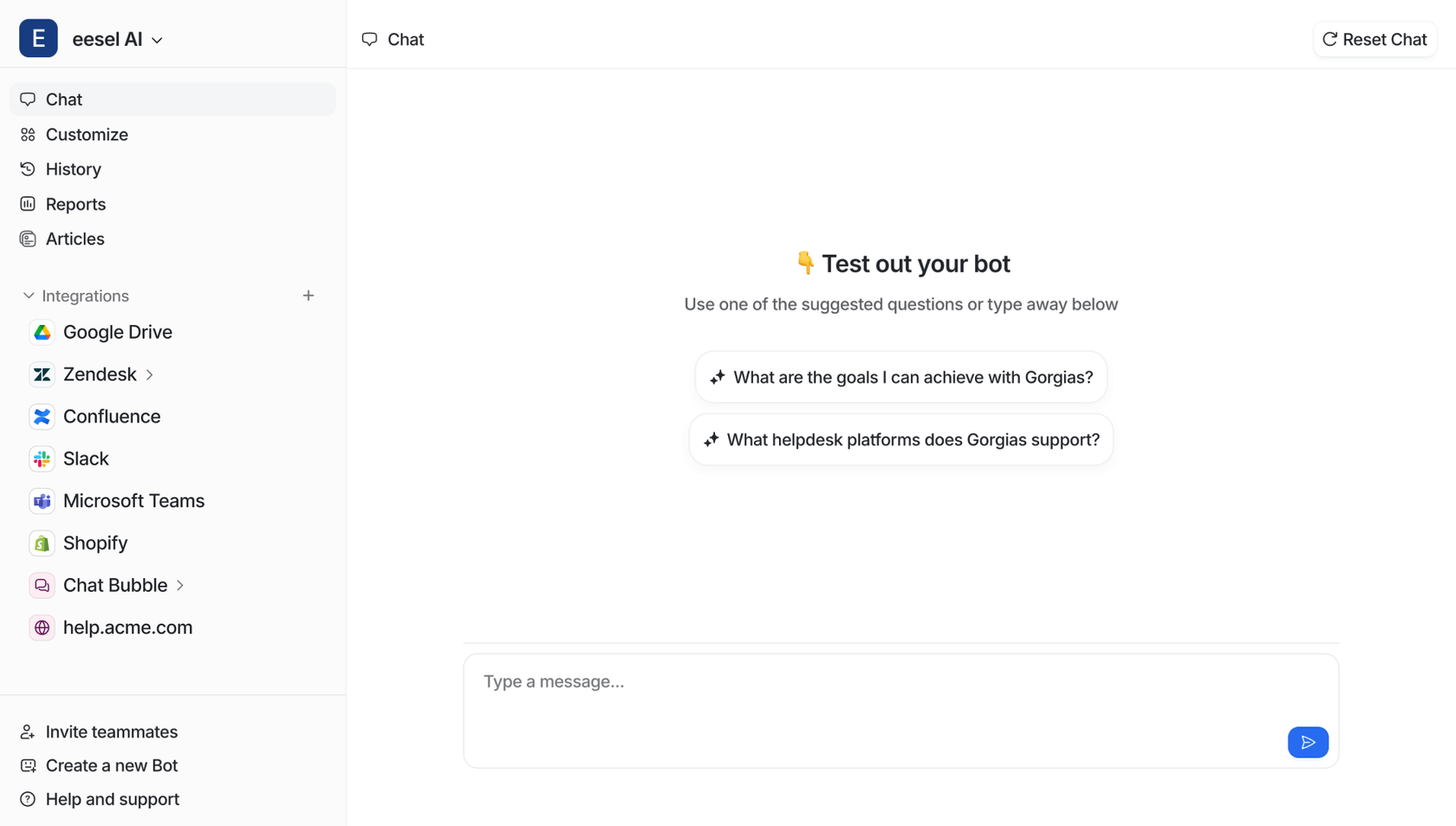
Your phone lines are buzzing with customer insights, but let’s be honest, most of that intel goes completely unheard. Every call contains clues about what your customers need, how your team is doing, and where your product is missing the mark. The big problem? Nobody has time to listen to every single call, and a spreadsheet of call times doesn’t tell you much of anything.
This is where call analytics tools step in. They’re designed to dig into your customer conversations, pull out the important stuff, and present it as information you can actually use.
In this guide, we’ll break down what call analytics really is today, how the AI behind it works, and the benefits it can bring to your business. We’ll also cover how to move beyond just staring at dashboards and start turning those insights into automated actions that genuinely improve your support.
What is call analytics?
At its simplest, call analytics is the process of analyzing phone call data to extract valuable insights to help your business make better decisions. But it’s come a long way from just counting calls and tracking how long they last. With AI, modern call analytics can now understand the content of the conversations themselves.
It’s the difference between asking "how many calls did we get?" and "what were those calls about, how did the customer feel, and what should we do next?"
Here’s a look at how that actually works:
-
Gathering the basics: First, you have to collect the foundational data for every call. This includes things like the caller’s number, the time and date, call duration, and where the call came from (like a specific ad or landing page).
-
Analyzing the conversation: This is where things get interesting. Using tech like speech-to-text and natural language processing, the system effectively "listens" to the call to figure out what was said, the emotion behind the words, and how the call ended.
-
Finding actionable insights: Finally, all this analyzed data is rolled up into reports you can actually understand. These insights help your marketing, sales, and support teams make decisions based on real data instead of just guessing.
 Comparing traditional methods to modern call analytics.
Comparing traditional methods to modern call analytics.These insights are most useful when they aren’t trapped on an island. What you learn from your phone calls should influence how you handle support everywhere else, from your email queues to your live chat.
How does modern call analytics work?
The journey from a customer’s voice to a business-changing insight involves a few clever layers of technology. It’s not a single tool, but a workflow that turns raw audio into useful intelligence. Here’s a peek under the hood.
Step 1: Call tracking and recording
It all begins by connecting a call to its source. Businesses will often use unique phone numbers for different marketing campaigns. For example, the number you see on a Google Ad might be different from the one on the website’s contact page. This simple method, known as call tracking, lets you see exactly which campaigns are getting people to pick up the phone.
While that’s happening, the call is securely recorded. This isn’t just for a manager to review later; the recording is the raw material for all the AI analysis to come.
Step 2: Speech-to-text transcription
Next, an AI model gets to work turning the audio recording into a written transcript. This step changes an unstructured audio file into structured text that a computer can search and read. All of a sudden, a 20-minute chat becomes a document that a machine can process in seconds. The accuracy of the transcription is really important, since everything else is built on top of it.
Step 3: AI-powered conversation analysis
With a text transcript ready, Natural Language Processing (NLP) algorithms can start figuring out what it all means. This is more than just reading words; it’s about understanding context, intent, and emotion. Here are a few key analyses that happen here:
-
Sentiment analysis: The AI takes the temperature of the conversation, figuring out if a customer is happy, frustrated, or neutral. It can even track how that sentiment shifts during the call, which helps you quickly spot conversations that went south and might need a follow-up.
-
Keyword spotting: The system scans the transcript for specific words or phrases you’ve marked as important. This might be competitor names, product models, or critical phrases like "cancel my account" or "I’m really unhappy." This lets you automatically flag calls that need a closer look.
-
Topic modeling: Instead of just looking for specific keywords, topic modeling uses AI to group conversations into common themes. It might find that 20% of your calls are about billing, 15% are about shipping, and 10% are feature requests, all without you having to define those categories yourself.
 A dashboard showing AI-powered conversation analysis features for call analytics.
A dashboard showing AI-powered conversation analysis features for call analytics.What you actually get from call analytics
Putting call analytics in place is all about moving from guessing to knowing. When you can put numbers to what’s happening in your customer conversations, you can make real improvements across the whole company.
A better customer experience
You can’t fix problems you’re not aware of. Call analytics puts a spotlight on the friction points in your customer journey. By looking at thousands of call transcripts, you can quickly see the most common questions, complaints, and frustrations your customers are running into.
For instance, a company might notice that 30% of their support calls are about one confusing step in their product setup. Instead of having agents explain the same thing over and over, they can create a clear help article or a short video tutorial. This heads off future calls and makes for happier customers.
Improved agent coaching and performance
Traditionally, quality assurance for support teams meant a manager would randomly listen to a few calls per agent each month. It’s slow and often doesn’t give you the full picture. Call analytics lets you analyze 100% of calls, giving you a complete view of how everyone is performing.
You can spot the communication habits of your top agents and use their calls as training material. You can also see where certain agents might need a bit more coaching. Managers can use keyword spotting to make sure agents are sticking to compliance scripts or to see if they’re mentioning upsell opportunities when it makes sense.
 Using call analytics for improved agent coaching and performance monitoring.
Using call analytics for improved agent coaching and performance monitoring.Better return on your marketing and sales budget
How do you know if your marketing budget is actually bringing in good leads? Call analytics connects your ad spend directly to the number and quality of the calls you receive.
By using call tracking, you can see that a specific Facebook ad isn’t just driving lots of calls, but that those calls are turning into valuable sales. This data gives you the confidence to put more money into what’s working and cut the campaigns that are just bringing in tire-kickers. It draws a straight line from your marketing efforts to revenue.
 A marketing attribution report showing the ROI from Call analytics data.
A marketing attribution report showing the ROI from Call analytics data.Smarter product and operational decisions
Your customers are basically a free focus group. Every day, they’re on the phone telling you what they love about your product, what’s confusing, and what’s just plain broken. Call analytics captures all of this feedback at scale.
Picture this: a software company rolls out a new update. Within hours, call analytics could spot a spike in calls mentioning a "broken feature" or a specific error message. This feedback can be flagged and sent right over to the engineering team, helping them ship a fix before it affects thousands more customers.
From call analytics to action: Closing the gap
Getting insights from your calls is a great first step, but insights sitting on a dashboard don’t actually solve any customer problems. The real trick, and where most companies get stuck, is turning that information into action. This is where standalone call analytics tools can fall a little short.
The problem with siloed call analytics insights
Many call analytics platforms are good at telling you what is happening, but they can’t help you do anything about it. This creates a few big headaches:
-
It’s all manual: An analyst might discover that "password resets" are your top call driver. That’s a great insight, but then a manager has to manually create a new help desk article, draft a saved reply, or set up a training session. The whole process is slow and disconnected.
-
Channel disconnect: The data from your calls is totally separate from your other support channels. An issue you spot on a phone call isn’t automatically used to improve your chatbot’s answer to the same question. This leads to inconsistent support and means you’re solving the same problem in a bunch of different places.
-
It can’t take action: At the end of the day, these tools can’t act on the insights they find. They can’t automatically tag incoming tickets in your help desk, draft replies for agents, or resolve common questions without someone stepping in.
 A workflow showing how to close the gap between call analytics insights and action.
A workflow showing how to close the gap between call analytics insights and action.How eesel AI turns call analytics insights into automated action
This is where you need an "action layer" that plugs right into your existing support tools, and that’s what eesel AI is built for. While call analytics identifies what your customers are asking about on the phone, eesel AI automates the response to those same questions across all your text-based channels.
Here’s how it works:
-
Connect your knowledge: You take the top themes from your call analytics reports (like "return policy" or "shipping status"). Then, you make sure your existing knowledge sources, like your help center, Google Docs, or past tickets, have solid answers for them. eesel AI connects to all of these sources in one click, no migration necessary.
-
Automate resolutions: eesel AI’s AI Agent uses this unified knowledge to resolve related tickets right inside your help desk, whether you use Zendesk, Freshdesk, or Intercom. So when a customer emails about the return policy you just learned about from your calls, the AI Agent can answer them instantly.
-
Assist your agents: For trickier issues that need a human, the AI Copilot works alongside your team, drafting accurate and on-brand replies based on that same knowledge. This makes sure the insights you get from call analytics lead to consistent, high-quality support everywhere.
Getting started with a call analytics-driven support strategy
Ready to build a smarter support workflow? You don’t have to change everything overnight. Here’s a simple way to get started.
First, figure out what you’re trying to achieve. Are you hoping to reduce call volume, improve your first-call resolution rate, or get a better handle on which marketing campaigns are working? Having a clear goal helps you focus.
Next, find a call analytics tool that gives you deep conversational insights, not just basic call logs. You need a platform that can analyze the content of your calls.
Finally, don’t stop at the dashboard. Bring in a tool like eesel AI that connects directly with your help desk and knowledge sources. This is the key to actually automating the work you uncover with your call analytics. You can even use eesel AI’s simulation feature to test how well it would have handled past tickets, giving you a clear forecast of its impact before you ever turn it on.
 Forecasting the impact of automation based on call analytics insights with eesel AI.
Forecasting the impact of automation based on call analytics insights with eesel AI.The power of call analytics
Call analytics is a must-have for uncovering the valuable insights hiding in your customer phone calls. But you only get its full power when you use those insights to drive smart automation across all your support channels. A modern support strategy means you need to both listen and act. Call analytics helps you listen better, and AI automation gives you the power to act on what you hear instantly.
Ready to turn your customer insights into resolutions? Sign up for a free trial or book a demo of eesel AI and see how you can automate your frontline support today.
Frequently asked questions
Most modern call analytics platforms are cloud-based and designed for quick setup, often integrating with your existing phone system in just a few steps. The initial configuration is usually straightforward, allowing you to start gathering insights within a day or two, not weeks.
Call analytics is valuable for businesses of all sizes. For small teams, it can uncover critical product feedback or marketing insights that you might otherwise miss, helping you make smarter decisions with a limited budget.
Reputable platforms take customer privacy very seriously, offering features like automated redaction to scrub sensitive data like credit card numbers or personal IDs from transcripts and recordings. Always ensure the provider you choose is compliant with regulations like GDPR and CCPA.
This is a key challenge, and the solution is to connect insights to action. Instead of just viewing reports, use a tool like eesel AI to automatically update your help center or resolve tickets based on the top issues your call analytics platform uncovers.
Absolutely. The best approach is to frame it as a tool for professional development, not just monitoring. Use call analytics to identify examples of great calls to share as best practices and to find coaching opportunities based on data-driven trends rather than random spot-checks.






